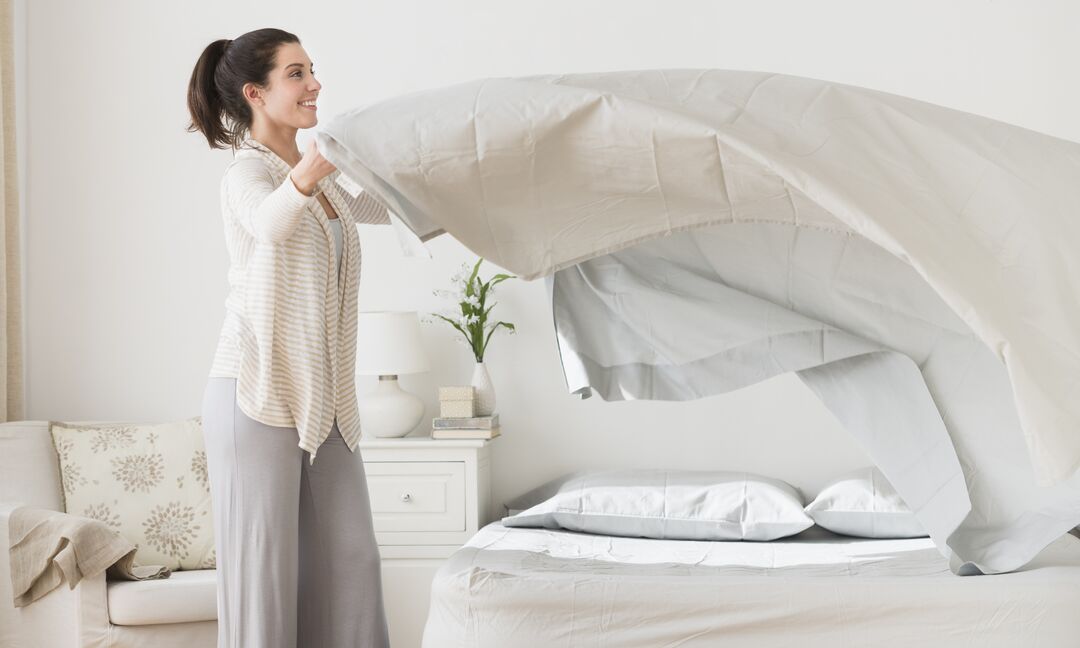GROUPON GUIDE TO COLUMBUS
The Guide on How to Buy Bed Sheets
BY: Editors |Mar 25, 2019
Shop Bed Sheets

Trending
Bamboo Cool 1800 Series Blend 4 Pieces Super Soft Sheets Set Deep Pockets
Sale Ends 4/27
Bluff City Bedding

King Size 1800 Series Bed Sheets Deep Pocket 4 Piece Set - 15 Colors Sheet Set
70% discount_off
Bluff City Bedding

4pcs Triangle Bed Sheet Mattress Holder Fastener Grippers Clips Straps Suspender
70% discount_off
SIXTY SHADES OF GREY INC.

6 Piece 4 Pillowcases 1800 Series Cotton Feel Bamboo Cool Deep Pocket Sheet Sets
76% discount_off
Bluff City Bedding

2 Pack Soft Satin Pillowcase Pillow Case Cushion Cover Queen King Size
84% discount_off
ITBELONGS2U INC

Satin Silk Pillowcase Set Pillow Covers Protector King/Queen 1 or 2 Pack
89% discount_off
SGDL Holdings Inc

Queen Size Luxury Comfort 4-Piece 1800 Series Bedding Super Soft Feel Sheet Sets
78% discount_off
Bluff City Bedding

Trending
Bamboo Cool 1800 High Thread Count Sheet Cotton Feel Deep Pockets
85% discount_off
Bluff City Bedding

1800 Count Bamboo Feel Dobby Stripe Sheet Set Deep Pockets 4 Piece Set
Sale Ends 4/27
Bluff City Bedding

1800 Series Cotton Satin Feel Dobby Stripe Sheet Set - Assorted colors and sizes
Sale Ends 4/27
Bluff City Bedding

6 PIECE EGYPTIAN COTTON FEEL NICE SHEETS 1800 SERIES DEEP POCKETS 4 PILLOWCASES
76% discount_off
Bluff City Bedding

1800 Series With Pillow Cases Deep Pocket 15 Colors All Sizes Bed Sheet Sets
85% discount_off
Bluff City Bedding

FreshFolds Premium Turkish Cotton Printed Flannel Sheet Set
73% discount_off
FreshFolds

Full Double Size Comfort 4-Piece Sheet Set 1800 Series Bedding Super Soft
81% discount_off
Bluff City Bedding

Queen Size Luxury Comfort 4-Piece 1800 Series Deep Bedding Soft Sheet sets
Sale Ends 4/27
Bluff City Bedding
Shop Bedding

Trending
Bamboo Cool 1800 Series Blend 4 Pieces Super Soft Sheets Set Deep Pockets
Sale Ends 4/27
Bluff City Bedding

King Size 1800 Series Bed Sheets Deep Pocket 4 Piece Set - 15 Colors Sheet Set
70% discount_off
Bluff City Bedding

Almost Gone
Costway 15/20/25lbs Weighted Blanket Removable Soft Crystal Cover,Glass Bead
34% discount_off
Costway

2 Pillow Cases Per Set King & Queen Size 1800 Series PillowCase
77% discount_off
Bluff City Bedding

6 Piece 4 Pillowcases 1800 Series Cotton Feel Bamboo Cool Deep Pocket Sheet Sets
76% discount_off
Bluff City Bedding

4pcs Triangle Bed Sheet Mattress Holder Fastener Grippers Clips Straps Suspender
70% discount_off
SIXTY SHADES OF GREY INC.

Comfort Therapeutic Quilted Weighted Blanket
65% discount_off
Ezone Technology Inc

Queen Size Luxury Comfort 4-Piece 1800 Series Bedding Super Soft Feel Sheet Sets
78% discount_off
Bluff City Bedding

2 Pack Soft Satin Pillowcase Pillow Case Cushion Cover Queen King Size
84% discount_off
ITBELONGS2U INC

6 PIECE EGYPTIAN COTTON FEEL NICE SHEETS 1800 SERIES DEEP POCKETS 4 PILLOWCASES
76% discount_off
Bluff City Bedding

Satin Silk Pillowcase Set Pillow Covers Protector King/Queen 1 or 2 Pack
89% discount_off
SGDL Holdings Inc

Trending
Bamboo Cool 1800 High Thread Count Sheet Cotton Feel Deep Pockets
85% discount_off
Bluff City Bedding

Soft Satin Silk Pillowcase Pillow Cover for Hair and Skin
Sale Ends 4/27
SIXTY SHADES OF GREY INC.

FreshFolds Premium Turkish Cotton Printed Flannel Sheet Set
73% discount_off
FreshFolds

1800 Count Bamboo Feel Dobby Stripe Sheet Set Deep Pockets 4 Piece Set
Sale Ends 4/27
Bluff City Bedding




